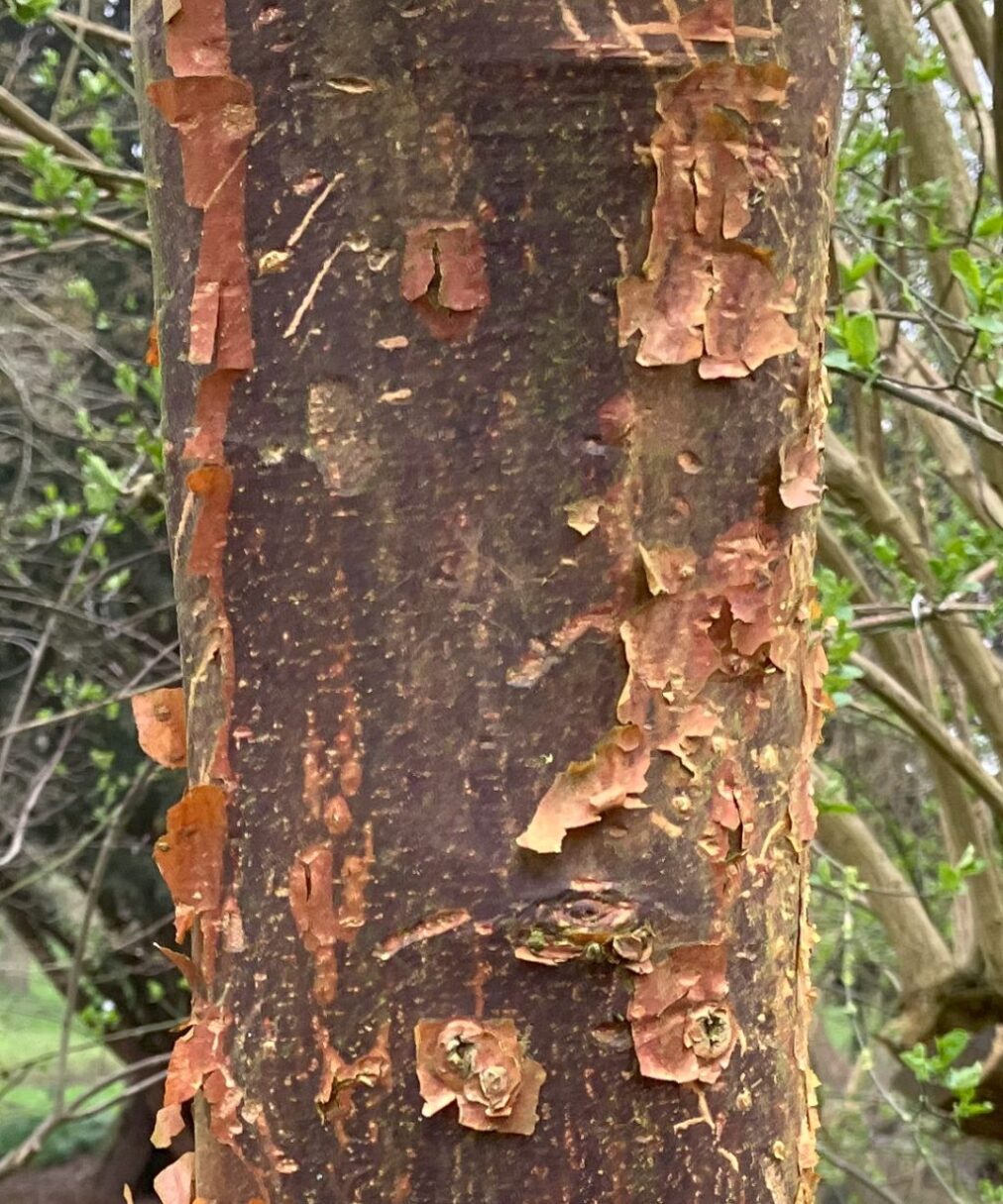#428 (A28) PAPERBARK MAPLE
Acer griseum

Planted: 1995
This tree is at the eastern end of the Central Path, on the north side.
| Alternative Name: | Blood-bark Maple |
| Distribution: | Native to central China at altitudes of 1,500 to 2,000 m. |
| Planting Date: | Dec 1995 |
| Bought from: | Hillier Nurseries, Romsey |
| Appearance: | It is a small to medium-sized deciduous tree, reaching 6 to 9 m tall and 5 to 6 m wide, with a trunk up to 70 cm in circumference. |
| Bark: | The bark is smooth, shiny orange red, peeling in thin, papery layers; it may become fissured in old trees. The shoots are densely downy at first, this wearing off by the second or third year and the bark exfoliating by the third or fourth year. |
| Leaf: | The leaves are compound, with a 2–4 cm petiole with three leaflets, each 3 to 10 cm long and 2 to 6 cm broad, dark green above, bright glaucous blue green beneath, with several blunt teeth on the margins. |
| Flowers: | The yellow flowers are androdioecious (having male flowers on some plants, bisexual ones on others), produced in small pendent corymbs in Spring, |
| Fruit: | The fruit being a paired samara with two winged seeds about 1 cm long with a 3 cm wing. |
| Uses: | It is one of many species of maples widely grown as ornamental plants in temperate regions. It is admired for its decorative exfoliating bark, translucent pieces of which often stay attached to the branches until worn away. It also has spectacular autumn foliage which can include red, orange and pink tones. |
| Plant Hunter: | Introduced to cultivation in Europe in 1901 by Ernest Henry Wilson for the Veitch Nurseries, Exeter, Devon and to North America shortly after. |
| Anecdotes and Comments | Has the Royal Horticultural Society’s Award of Garden Merit. |